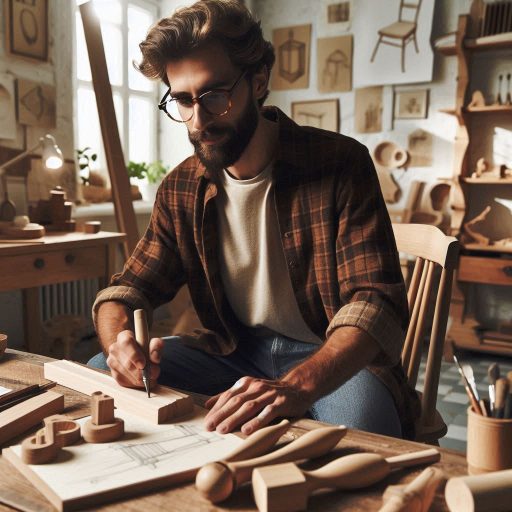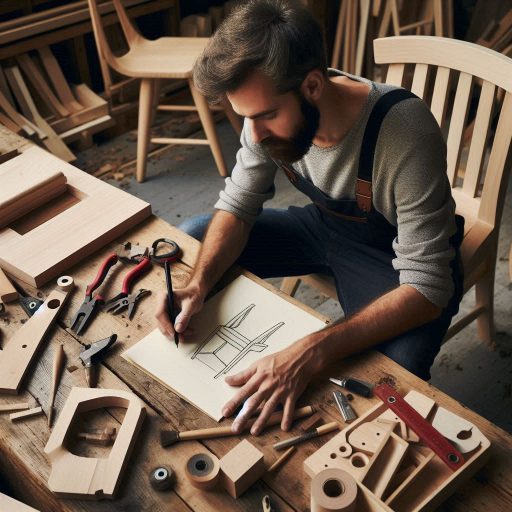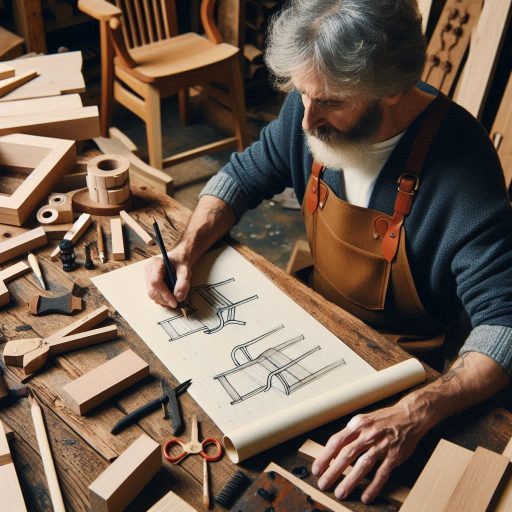Introduction
Creative directors play a vital role in shaping a brand’s visual identity and overall strategy.
Thehy lead creative teams, guiding projects from concept to execution.
This role demands strong leadership, innovative thinking, and excellent communication skills.
Creative directors are responsible for ensuring that the creative vision aligns with the brand’s goals.
Interviews are crucial in the hiring process for creative directors.
They provide candidates with the opportunity to showcase their skills, vision, and past experiences.
Given the competitive nature of the industry, aspiring creative directors must stand out during interviews.
Employers often receive numerous applications for each position, making it essential to make a lasting impression.
Preparation is key to a successful interview.
Candidates should research the company and understand its brand identity, mission, and values.
Familiarizing themselves with the company’s past campaigns can help candidates tailor their responses.
Demonstrating a passion for creativity and offering a unique perspective can significantly enhance their appeal.
Candidates can increase their chances of securing a creative director position by effectively conveying vision, experience, and adaptability.
Research the company
Importance of Researching the Company Before the Interview
Before attending an interview for a creative director position, researching the company is crucial.
Understanding the organization sets you apart from other candidates.
It demonstrates your genuine interest and commitment to the role.
When you know the company well, you can tailor your responses during the interview.
This preparation shows your potential employer that you value their work and vision.
A well-researched candidate can engage more effectively with interviewers.
You will be able to discuss how your skills align with the company’s goals.
This connection can help the interviewer envision you in the role.
Moreover, knowing about the company’s challenges allows you to address them directly.
It positions you as someone ready to contribute solutions and drive success.
Additionally, researching the company helps you assess if it aligns with your values and career aspirations.
Understanding the culture and work environment is essential for long-term job satisfaction.
When you find a good fit, you are more likely to thrive in your position.
Therefore, thorough research is not just beneficial; it is essential for both parties involved.
Tips on How to Gather Information About the Company’s Culture, Values, and Previous Work
Start by visiting the company’s website.
Analyze their mission statement and core values.
This information reveals what the company stands for and its overarching goals.
Familiarize yourself with their product offerings or services.
Knowing these details will help you speak knowledgeably about the company’s work and how you can enhance it.
Next, explore the company’s social media profiles.
Platforms like LinkedIn, Instagram, and Twitter showcase their projects and culture.
Observe how they engage with their audience.
Pay attention to their tone and style in posts.
This insight helps you align your communication style with theirs, ensuring a smoother interaction during the interview.
Read recent news articles or press releases about the company.
This information can highlight recent achievements or upcoming projects.
Being aware of these developments allows you to reference them during your interview.
It shows you are proactive and well-informed, which reflects positively on your candidacy.
Networking can also provide valuable insights.
Reach out to current or former employees on LinkedIn.
Ask about their experiences and impressions of the company culture.
This firsthand perspective can give you a deeper understanding of the organization.
Additionally, attending industry events can help you meet professionals associated with the company.
Engaging in conversations can uncover helpful information that is not publicly available.
Look for design portfolios or case studies that showcase the company’s previous work.
Analyzing these projects can reveal their creative approach and aesthetics.
Identify any unique elements or trends in their designs.
This understanding can help you propose ideas that align with their style and expectations.
Utilize online resources such as Glassdoor for employee reviews.
These reviews often discuss the company culture and work environment.
While opinions may vary, they can provide helpful insights.
Lastly, prepare questions for the interview based on your research.
Read: How to Create Memorable Characters: Pro Tips
Showcase your portfolio
Significance of Presenting a Strong Portfolio During the Interview
When interviewing for a creative director position, showcasing a strong portfolio is vital.
Your portfolio serves as tangible proof of your skills and creativity.
It allows you to demonstrate your design philosophy and the impact of your work.
A well-organized portfolio can captivate the interviewers and set you apart from the competition.
Your portfolio offers a platform to discuss your creative process and decision-making.
As you present each project, explain your role, the challenges faced, and the solutions implemented.
This narrative helps interviewers understand your problem-solving abilities and adaptability.
Engaging storytelling can make your work memorable, helping you leave a lasting impression.
Additionally, a strong portfolio shows your dedication to the field.
It reflects your commitment to growth and continuous learning.
Including projects that illustrate your evolution as a designer can further enhance your candidacy.
Interviewers appreciate candidates who take initiative in their professional development.
Therefore, curate your portfolio with purpose and clarity.
Curating a Portfolio That Highlights Relevant Skills and Experiences as a Creative Director
Begin by selecting projects that showcase your best work.
Choose pieces that highlight your strengths and align with the company’s aesthetic.
Focus on quality over quantity; a few standout projects often make a stronger impact than many mediocre ones.
Ensure that each project represents your abilities as a creative director, emphasizing your leadership and vision.
Consider including a diverse range of projects.
Showcase various design styles and mediums to demonstrate versatility.
This breadth of work can illustrate your ability to adapt to different client needs and project types.
Highlight any collaborative projects that showcase your teamwork skills, as collaboration is crucial in a creative director role.
Clearly explain your role in each project.
Include details about the scope, objectives, and outcomes.
Discuss your contributions to the creative process and the results achieved.
Quantifying results can enhance your credibility; for example, mention any increases in engagement or sales.
This data helps interviewers see the tangible impact of your work.
Make sure your portfolio is visually appealing and well-organized.
Use a clean layout that allows the work to shine.
Ensure that your design choices reflect your aesthetic sensibilities as a creative director.
Consistency in presentation helps convey professionalism and attention to detail.
Additionally, include a brief introduction about yourself.
Provide context for your career journey and design philosophy.
This introduction allows interviewers to understand your unique perspective and motivations.
Keep it concise, focusing on key highlights that relate to the position.
Finally, prepare to discuss your portfolio during the interview.
Anticipate questions about specific projects and your design choices.
Practicing your narrative will boost your confidence and help you articulate your vision clearly.
Presenting a strong portfolio during your interview is essential.
It showcases your skills and experiences as a creative director.
Read: Ceramic Art Exhibitions to Visit in 2024
Practice common interview questions
Common Interview Questions That Aspiring Creative Directors May Encounter
When preparing for a creative director interview, practicing common interview questions is essential.
Familiarity with these questions can boost your confidence and performance.
Here are some typical questions you may encounter:
- Can you describe your design process? This question assesses how you approach creative projects.
- What inspires your work? Interviewers want to understand your sources of inspiration and creativity.
- How do you handle criticism? This question gauges your ability to accept feedback and improve your work.
- Can you share a project that showcases your skills? This allows you to highlight specific experiences that demonstrate your qualifications.
- How do you prioritize tasks in a creative project? This question examines your time management and organizational skills.
- What is your experience with team collaboration? Interviewers want to know how you work with others and lead a team.
- How do you stay updated with design trends? This question assesses your commitment to professional growth.
- Can you explain a time when you overcame a challenge? This allows you to showcase your problem-solving abilities.
- How do you incorporate client feedback into your designs? This question gauges your ability to balance creative vision with client needs.
- What role does storytelling play in your designs? Interviewers want to understand how you use narrative elements in your work.
Ways to Prepare and Practice Responses to Showcase Expertise and Qualifications
To prepare for these questions, start by reflecting on your experiences.
Think about specific projects and challenges you have faced.
Create detailed responses that highlight your skills, qualifications, and achievements.
Use the STAR method (Situation, Task, Action, Result) to structure your answers.
Describe the situation you encountered, the task you needed to complete, the action you took, and the result of your efforts.
This approach provides a clear framework for showcasing your expertise.
Next, practice your responses aloud.
Doing so helps you articulate your thoughts clearly and confidently.
Consider recording yourself or practicing with a friend or mentor.
This practice can help identify areas for improvement, such as clarity or conciseness.
Additionally, familiarize yourself with industry terminology and jargon.
Use relevant language in your responses to demonstrate your knowledge and expertise.
This familiarity shows you are engaged with current trends and practices in the field.
Mock interviews can also be beneficial.
Conduct these sessions with a friend or colleague acting as the interviewer.
This exercise can simulate the interview environment and help you get comfortable with answering questions under pressure.
Seek feedback after your mock interviews.
This input can help you refine your responses and identify any areas that need improvement.
Adjust your answers based on this feedback to ensure clarity and impact.
Finally, prepare a few questions to ask the interviewer.
This demonstrates your engagement and interest in the position and the company.
Asking insightful questions can also lead to a more dynamic conversation.
Practicing common interview questions is vital for aspiring creative directors.
By reflecting on your experiences and preparing well-structured responses, you can confidently showcase your qualifications during the interview.
With thorough preparation, you can make a lasting impression and increase your chances of success.
Read: Character Design Trends: What’s Hot in 2024?
Demonstrate creativity
Importance of Showcasing Creativity During the Interview Process
Showcasing creativity during the interview process is vital for aspiring creative directors.
This role requires a unique blend of vision and innovation.
Employers seek candidates who can bring fresh ideas to the table and push boundaries.
Demonstrating your creative skills helps you stand out among other applicants.
It indicates that you can generate original concepts that resonate with the company’s brand.
Creativity also reflects your ability to adapt and solve problems.
In a fast-paced environment, challenges arise frequently.
Employers want to see that you can think on your feet and offer innovative solutions.
Highlighting your creativity signals that you can navigate obstacles effectively and deliver results.
Moreover, creative thinkers often inspire their teams, fostering collaboration and enthusiasm.
Additionally, showcasing your creative prowess builds a strong personal brand.
When you present unique ideas, you position yourself as a thought leader in the field.
This reputation can lead to greater opportunities and career advancement.
As a creative director, your influence shapes the direction of projects and teams.
Therefore, demonstrating your creativity during the interview can have lasting implications for your career.
Tips on How Aspiring Creative Directors Can Demonstrate Their Innovative Thinking and Problem-Solving Abilities
To effectively demonstrate your creativity, prepare a portfolio of your work.
Include diverse projects that showcase your skills and versatility.
Highlight specific examples where you implemented innovative ideas.
Describe the challenges you faced and how your creative solutions led to successful outcomes.
A well-curated portfolio acts as tangible evidence of your capabilities.
During the interview, be prepared to discuss your creative process.
Explain how you generate ideas, collaborate with others, and refine concepts.
This transparency helps interviewers understand your approach to creativity.
They want to see that you have a systematic method for problem-solving, even within the creative realm.
Engage in brainstorming exercises during the interview.
Some interviewers may present hypothetical scenarios or problems.
Use these opportunities to demonstrate your thought process.
Discuss your ideas openly, showing how you arrive at innovative solutions.
This interactive approach illustrates your creativity in real-time.
Use storytelling to convey your creative experiences.
Narratives can make your examples more engaging and memorable.
Share specific instances where your creativity made a significant impact.
Focus on the results of your efforts and how they aligned with the company’s objectives.
Storytelling adds depth to your answers and highlights your unique perspective.
Additionally, keep up with industry trends and innovations.
Familiarize yourself with emerging technologies and design approaches.
Discuss these trends during the interview to show your knowledge and adaptability.
Your awareness of current developments demonstrates your commitment to continuous learning and creativity.
Finally, prepare thoughtful questions that reflect your innovative mindset.
Inquire about the company’s creative processes, collaboration styles, or recent projects.
Engaging in discussions about creativity highlights your interest in contributing to the organization’s vision.
It positions you as a proactive candidate who values creative growth.
Demonstrating creativity in the interview is essential for aspiring creative directors.
Read: How to Price Your Ceramic Artwork

Communicate effectively
Significance of Effective Communication Skills for Creative Directors
Effective communication is a critical skill for creative directors.
In this role, you are responsible for leading teams, collaborating with clients, and translating creative visions into reality.
Without strong communication, even the best ideas can fail.
Communicating clearly ensures that everyone involved in a project understands the objectives and expectations.
It also helps avoid misinterpretation, which can lead to costly mistakes or delays.
As a creative director, you are the bridge between the creative team and stakeholders, like clients or executives.
You must convey complex creative concepts in a way that non-creative stakeholders can understand.
This skill is essential when justifying design choices, explaining the creative process, or addressing feedback.
Effective communication builds trust and fosters collaboration, which are key for achieving successful outcomes.
Strong communication skills also enhance your leadership abilities.
A creative director must motivate and inspire their team.
Clear communication allows you to provide constructive feedback, set expectations, and guide the team toward the project’s vision.
When you communicate effectively, you ensure that every team member is aligned with the project goals and deadlines, which drives efficiency and creativity.
Articulating Ideas Clearly, Actively Listening, and Engaging with Interviewers
During an interview for a creative director position, demonstrating effective communication is crucial.
One of the first steps is articulating your ideas clearly.
When discussing past projects or creative concepts, avoid jargon and overly technical language.
Use simple, concise language that highlights the key points of your creative vision.
Break complex ideas down into digestible parts, and focus on the value those ideas brought to the project or organization.
This approach ensures your interviewers understand your thinking and how you approach challenges.
Prepare to discuss examples of your work where you successfully communicated with teams or clients.
Highlight situations where you took a leadership role in explaining a complex project.
This shows you can manage different personalities and perspectives while keeping the project on track.
Practicing how you explain your creative process will help you sound confident and clear during the interview.
Active listening is just as important as clearly articulating your thoughts.
When the interviewer speaks, give them your full attention and respond thoughtfully.
Active listening shows that you are engaged and respectful of others’ input.
It also helps you answer questions more effectively since you understand the interviewer’s perspective.
Engage by asking insightful follow-up questions or seeking clarification on certain points.
This interaction demonstrates that you value two-way communication, which is key in creative collaboration.
Lastly, engage with the interviewer by making the conversation feel natural and interactive.
Ask thoughtful questions about the company’s creative process, team dynamics, or specific challenges they face.
Engaging with the interviewer makes the conversation more meaningful and positions you as someone who values collaboration.
Strong communication skills are essential for a creative director.
Being able to clearly articulate your ideas, actively listen, and engage with others will set you apart as a strong candidate.
Show enthusiasm and passion
Importance of Showing Enthusiasm and Passion for the Creative Industry
In a creative director interview, your skills and experience matter, but your enthusiasm and passion can set you apart.
The creative industry thrives on energy, innovation, and fresh perspectives.
Showing excitement for the role and the field reflects your dedication and commitment.
Employers want to hire someone who is not just qualified but genuinely passionate about the industry’s evolving nature.
Creative directors lead teams, inspire innovation, and push creative boundaries.
Without passion, it becomes difficult to fuel that drive in yourself and others.
Employers look for candidates who demonstrate genuine love for the craft because it often translates into higher-quality work and long-term success.
Enthusiasm shows that you’re not just applying for a job; you’re pursuing a career that excites you.
Moreover, displaying passion during an interview signals that you’ll bring positive energy to the workplace.
Passionate employees often have the drive to exceed expectations and tackle challenges head-on.
In a highly competitive field like creative direction, passion is key to keeping up with trends, continuously learning, and improving.
It also conveys that you’re likely to stay engaged and motivated even when projects become difficult or demanding.
Tips on How to Convey Genuine Interest and Excitement During the Interview
To convey genuine enthusiasm, first ensure that your body language reflects positivity.
Sit upright, maintain good eye contact, and smile naturally during the interview.
These small non-verbal cues signal engagement and enthusiasm.
Even if you’re nervous, practice projecting confidence in your body language, as it sets the tone for the conversation.
Another way to express passion is by talking about your past projects.
When you describe work that excites you, it naturally shows in your tone and expressions.
Be ready to highlight specific creative challenges you faced and how solving them motivated you.
Show excitement as you discuss how these experiences have shaped your creative vision.
This storytelling approach allows your passion to shine through authentically.
Ask insightful questions about the company’s creative process or upcoming projects.
This not only demonstrates your preparedness but also your curiosity and desire to contribute creatively.
Employers love to see candidates who are eager to engage and collaborate.
Tailor your questions to the specific role or company, which will further show your genuine interest.
Mention trends or innovations in the creative industry that excite you.
If you’re passionate about emerging technologies or new design methodologies, share that with your interviewer.
Discuss how these innovations inspire your work and how you hope to integrate them into future projects.
This forward-thinking approach reflects enthusiasm and a proactive mindset.
Finally, express your excitement for the opportunity directly.
At the end of the interview, reiterate how thrilled you are about the role and how passionate you are about working in the creative industry.
Sometimes, simply voicing your excitement can leave a strong impression on interviewers.
Showing enthusiasm and passion is essential in a creative director interview.
It sets you apart as a candidate who is not only skilled but also genuinely invested in the industry.
Ask thoughtful questions
Importance of Asking Thoughtful Questions During the Interview
Asking thoughtful questions during an interview is essential, especially for aspiring creative directors.
It shows your genuine interest in the role and the company.
Engage with the interviewer by asking insightful questions to show interest in how you can contribute.
This approach demonstrates that you’re focused on more than just landing the job.
It highlights your eagerness to understand the role and how you can add value.
Transform Your Career Today
Unlock a personalized career strategy that drives real results. Get tailored advice and a roadmap designed just for you.
Start NowThoughtful questions reflect your critical thinking skills, curiosity, and passion for the position.
Interviews should be two-way conversations.
While the interviewer assesses your suitability, you should evaluate if the company is a good fit for you.
Asking thoughtful questions helps you gather information about the organization’s structure, challenges, and culture.
It allows you to see if the company aligns with your career goals and values.
By showing you are thinking beyond the surface, you establish yourself as a serious and professional candidate.
Additionally, thoughtful questions show that you have done your research.
When you ask about specific projects, company goals, or values, you demonstrate that you have taken the time to understand their work.
This level of engagement can distinguish you from other candidates who might only give generic answers.
It proves that you are already invested in the company’s future and are eager to contribute to its success.
Suggestions for Questions That Aspiring Creative Directors Can Ask to Demonstrate Engagement and Understanding of the Company
When preparing for your interview, think about the key aspects of the role and the company.
Consider the company’s challenges, its creative direction, and how you can help solve problems.
Below are some examples of questions to show they are engaged and knowledgeable:
“Can you describe the company’s current creative direction and how you see it evolving?”
This question demonstrates that you are interested in the company’s long-term vision.
It shows your willingness to align your creative strategy with their goals.
“What are some of the biggest challenges the creative team is facing right now?”
By asking this, you show that you are solution-oriented.
You also position yourself as someone who can come in and tackle those challenges effectively.
“How do you envision the role of a creative director contributing to the overall growth of the company?”
This question indicates that you see the role of creative director as being integral to the company’s success.
It highlights your understanding of the broader business goals.
“What are the key performance indicators for the creative team, and how do you measure success?”
Understanding how success is measured helps you tailor your approach.
It shows that you are focused on results and are ready to contribute to measurable outcomes.
“Can you share examples of past creative projects that have had a significant impact on the company?”
Asking this question demonstrates your interest in learning from the company’s history and successes.
It gives you insight into what the company values in its creative work.
“How would you describe the company culture, particularly in terms of collaboration between creative and other departments?”
This question shows you value teamwork and collaboration.
Asking thoughtful questions during the interview is vital.
It helps you gather information while demonstrating your engagement, professionalism, and readiness for the role.
Follow up after the interview
Importance of Following Up with a Thank-You Note or Email After the Interview
Following up after an interview is a crucial step that many candidates overlook.
Sending a thank-you note or email shows professionalism and appreciation for the opportunity.
It reinforces your interest in the position and keeps you top of mind with the hiring team.
Following up also allows you to leave a positive, lasting impression.
It can be a small, yet significant, factor that sets you apart from other candidates who may not take the time to follow up.
By following up, you show that you value the interviewer’s time and effort.
It demonstrates that you are respectful, thoughtful, and genuinely engaged in the hiring process.
Employers appreciate candidates who go the extra mile, and a simple follow-up message can convey this.
Additionally, it provides an opportunity to clarify or add any points you may have missed during the interview.
It shows that you are proactive and still thinking about how you can contribute to the company.
Tips on How to Express Gratitude, Reiterate Interest in the Position, and Maintain Communication with the Hiring Team
When writing your thank-you note or email, begin by expressing your gratitude.
A simple statement like, “Thank you for taking the time to meet with me,” sets a positive tone.
Be sincere and specific in your appreciation.
Mention a key moment or discussion from the interview to personalize the message.
For example, “I particularly enjoyed our conversation about the company’s upcoming projects and how I can contribute to them.”
Transform Your Career Today
Unlock a personalized career strategy that drives real results. Get tailored advice and a roadmap designed just for you.
Start NowNext, reiterate your interest in the position.
Reaffirm your enthusiasm for the role and the company.
For example, you can write, “I am even more excited about the opportunity to join your team after our conversation.”
Expressing your continued interest assures the hiring team that you are genuinely invested in the position and eager to contribute your skills.
In your follow-up, briefly recap why you are a strong fit for the role.
Highlight one or two key strengths that align with the job requirements.
This reminds the interviewer of your qualifications and keeps your candidacy fresh in their mind.
For instance, you could say, “I believe my experience in creative leadership and project management will allow me to contribute significantly to your team’s success.”
It’s also essential to keep the communication open.
Politely mention that you look forward to hearing about the next steps in the hiring process.
You can phrase this as, “Please let me know if there is any additional information I can provide, and I look forward to learning about the next stages.”
This signals your eagerness without being overly pushy.
Finally, ensure your message is concise and professional.
Proofread for clarity and tone.
Sending your follow-up within 24 to 48 hours of the interview is ideal.
It shows promptness and respect for the hiring process.
Conclusion
Aspiring creative directors must understand the vital role they play in shaping a brand’s identity.
Interviews are essential in the hiring process, providing an opportunity to showcase skills and vision.
Given the competitive nature of the industry, standing out during interviews is crucial for success.
Key tips include researching the company thoroughly and understanding its mission and values.
Candidates should prepare to discuss their past experiences and how they align with the company’s goals.
Emphasizing unique perspectives and demonstrating a passion for creativity can significantly enhance their appeal.
As you prepare for your interviews, utilize these tips to present yourself confidently.
Focus on articulating your vision and showcasing your adaptability.
Effective preparation will help you make a strong impression during the hiring process.
Remember, a well-prepared candidate can turn a challenging interview into an opportunity for success.
By following these strategies, you can increase your chances of securing a creative director position in this dynamic industry.




